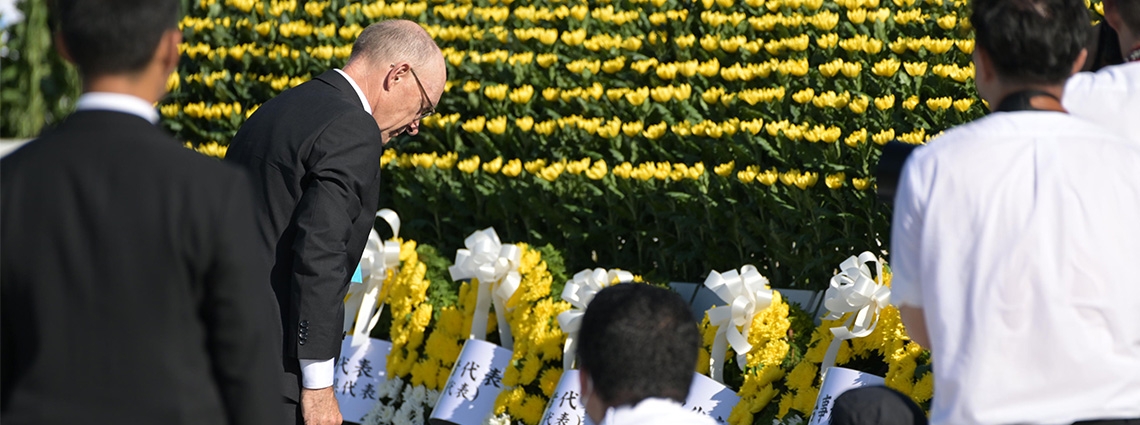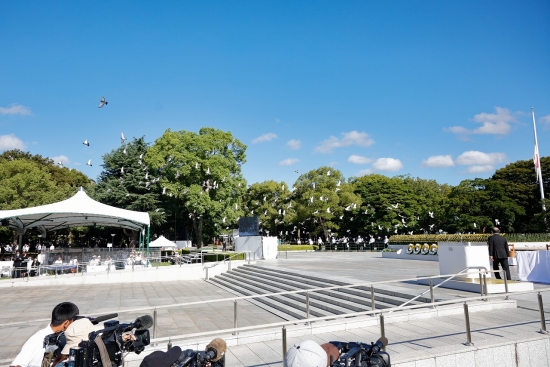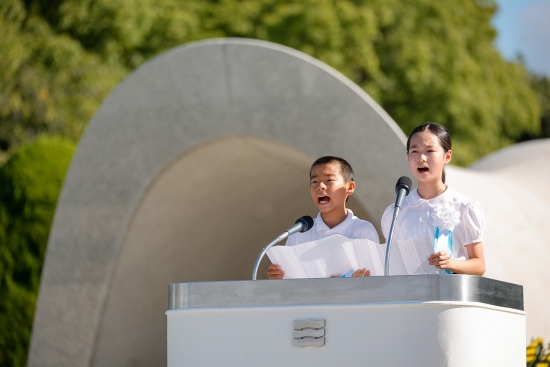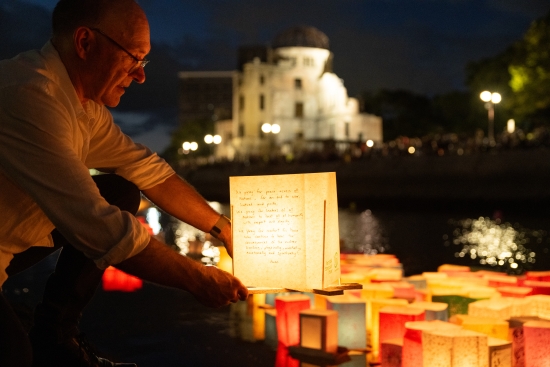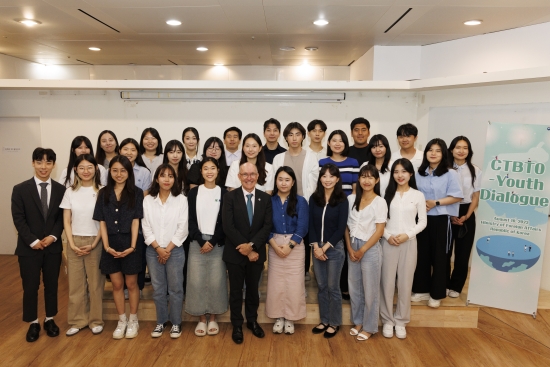CTBTO head pays tribute to Hiroshima and Nagasaki atomic bombing victims
The Executive Secretary of the Comprehensive Nuclear-Test-Ban Treaty Organization (CTBTO), Robert Floyd, took part in the Hiroshima Peace Memorial Ceremony marking the 78th anniversary of the atomic bombing of the city.
On 6 August, also known as “A-Bomb Day”, the Peace Memorial Park in central Hiroshima saw people from all over the world, including diplomatic representatives from 112 countries and the European Union, gather at the Memorial Cenotaph to pay homage to the victims of the devastating atomic blast.
The ceremony featured speeches by Prime Minister Fumio Kishida, the governor of Hiroshima, and a message from the UN Secretary-General delivered by UN High Representative for Disarmament Affairs Izumi Nakamitsu. The ceremony also included a dedication of flowers, a peace declaration read by the mayor of Hiroshima, and a commitment to peace read by children’s representatives. A moment of silence was observed at 08:15, the moment the bomb was dropped on the city, followed by the ringing of the peace bell.
“78 years ago on August 6, the city of Hiroshima was utterly destroyed in an instant by the first use of nuclear weapons in human history, and countless precious lives were lost. Those who managed to survive were left with great physical and psychological trauma. Grounded in this tragic experience, the citizens of Hiroshima, including the hibakusha (atomic bombing survivors), have continued to convey the realities of the bombing and speak about how precious peace is.”
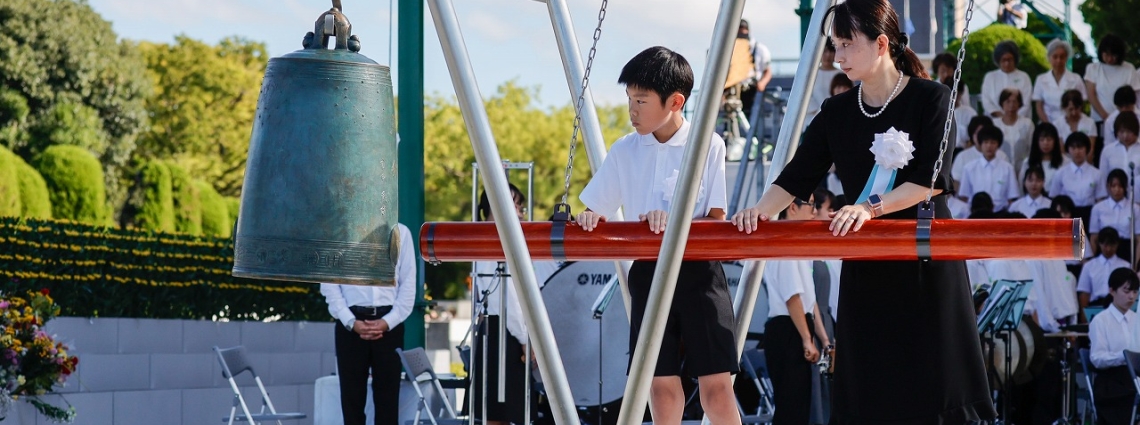
Ringing of the peace bell
After the event, Floyd and his delegation heard messages of peace from local junior secondary school students and the moving testimony of Teruko Yahata, an 86-year-old hibakusha who was 8 years old when the nuclear weapon detonated just 2.5 kilometres from her childhood home. She described seeing her neighbours fleeing in the aftermath of the blast. “Dozens, hundreds of people dragged their burnt bodies along; they were like a procession of ghosts. The city continued to burn through the night.”
In the evening, the Executive Secretary participated in a lantern floating ceremony, joining thousands of others along the shore of the Motoyasu River to place colourful paper lanterns on which they inscribed hopes for peace into the water.
"It is so motivating that we who work in non-proliferation and disarmament should do all we possibly can to see this world left in a better place."
The devastating impact of the Hiroshima and Nagasaki atomic bombings
The atomic bombings of Japan in 1945 were the result of the Manhattan Project, a top-secret World War II programme led by the United States in the hopes of developing the first-ever nuclear weapon before the German government under Adolf Hitler.
On 6 August, “Little Boy”, a gun-type uranium device, was dropped on the centre of Hiroshima, causing a firestorm within a fraction of a second from the detonation that raised the ground level temperature to over 7,000 °C, resulting in the instant death of tens of thousands of people.
Three days later, the second bomb, a plutonium-based bomb codenamed "Fat Man", was prepared for explosion over the city of Kokura. However, due to a thick layer of clouds, Nagasaki became the ultimate target.
Sources differ on the number of casualties caused by the bombings, with some estimates reaching as high as 166,000 deaths, mainly civilian. To this day, the hibakusha still cope with the tremendous aftereffects of radiation exposure.
Ending nuclear testing: A critical step in preventing nuclear proliferation
The Hiroshima and Nagasaki atomic bombings triggered an arms race that led to decades of nuclear testing to create nuclear weapons even more powerful than those employed in the blasts.
The Comprehensive Nuclear-Test-Ban Treaty (CTBT), which opened for signature in 1996, bans nuclear tests by anyone, anywhere, and for all time. By ending testing, the CTBT helps curb all nuclear arms proliferation, be it the development of nuclear weapons by countries that do not currently have them, upgrades to current nuclear arsenals or the creation of new, more advanced generations of nuclear weapons.
The verification regime set up under the CTBT is a crucial element in the non-proliferation and disarmament architecture to ensure that atomic bombings like those in Hiroshima and Nagasaki will remain a thing of the past. Since the Treaty’s adoption, only a dozen nuclear tests have been conducted and, in this century, only one State, the Democratic People's Republic of Korea (DPRK), has tested.
Continuation of the Executive Secretary's official travel
After the Hiroshima Peace Memorial Ceremony, Floyd made his first trip to the Republic of Korea as Executive Secretary, where he held meetings with the Second Vice Minister of Foreign Affairs, Oh Youngju, as well as youth representatives focused on non-proliferation and disarmament. He also visited Daejeon in the central-west region of the country to speak to fellows at the Korea Advanced Institute of Science and Technology Nuclear Non-proliferation Education and Research Center (KAIST NEREC).
He also visited the Korea Institute of Geoscience and Mineral Resources (KIGAM), the National Data Centre (NDC) for the country and the station operator for CTBT’s International Monitoring System’s primary seismic station PS31 in Wonju, and also held meetings at the Korea Institute of Nuclear Safety (KINS), and the Korea Institute of Nuclear Non-proliferation and Control (KINAC).
10 Aug 2023
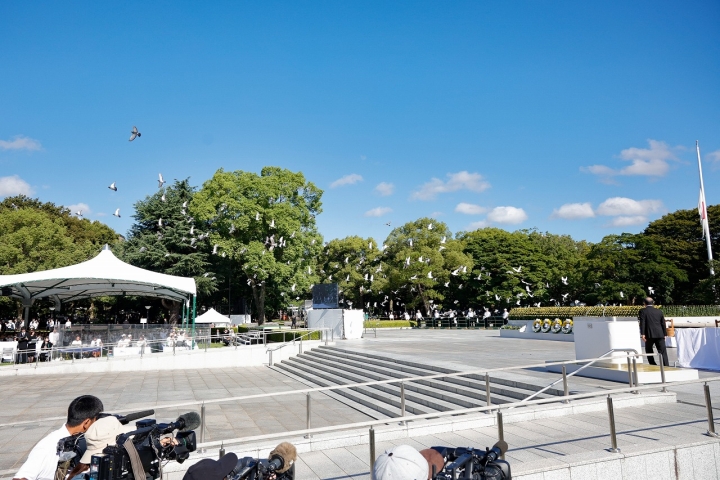
Hiroshima Peace Memorial Ceremony

Prime Minister Fumio Kishida delivering statement at ceremony
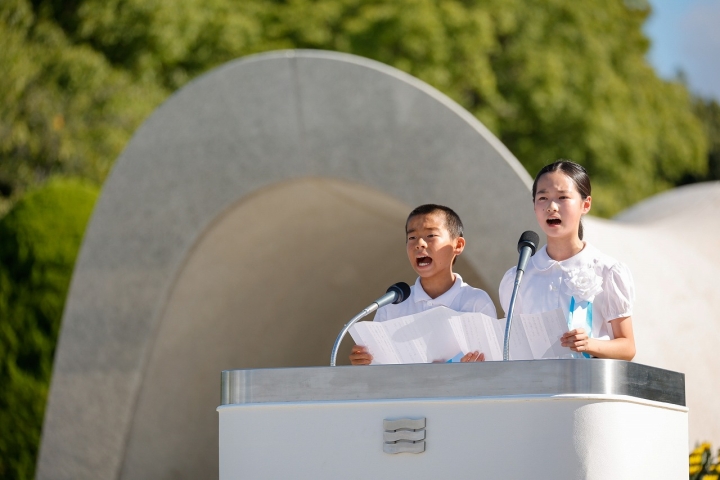
Peace reading by children’s representatives
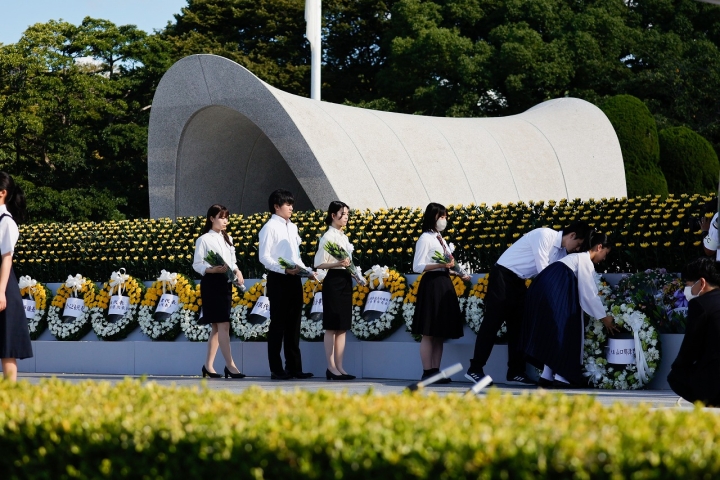
Local students laying flowers at ceremony
Teruko Yahata met with CTBTO’s Executive Secretary
CTBTO’s Floyd heard messages of peace from local students
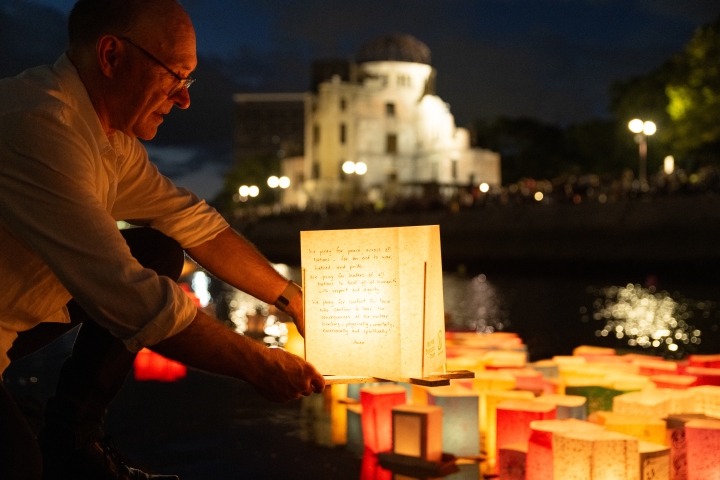
CTBTO Head taking part in lantern floating ceremony

CTBTO's Floyd meeting with youth representatives in Republic of Korea
